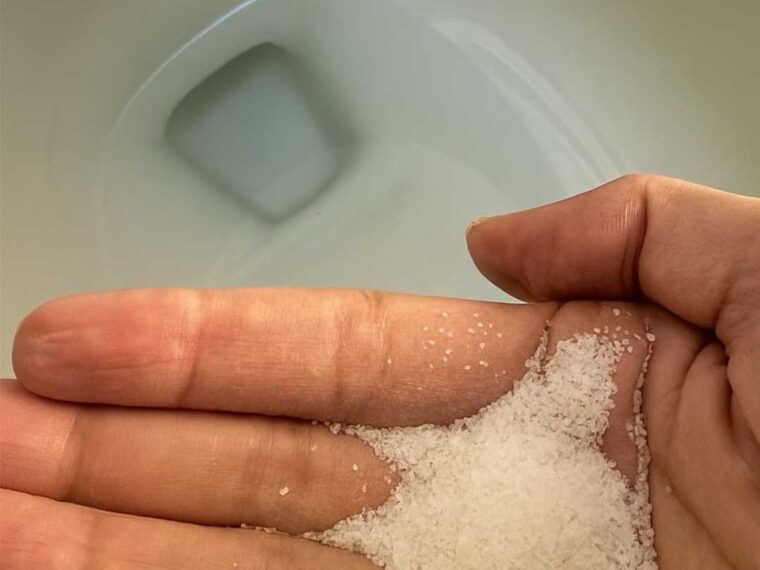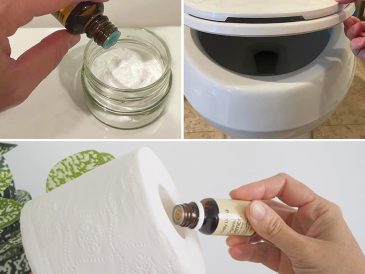In the realm of home maintenance, the bathroom often requires special attention. Among the various components that make up this essential space, the toilet is perhaps the most critical. While many homeowners rely on commercial cleaning products to maintain their toilets, there is a simple and natural alternative that is often overlooked: salt. This common household item can be a powerful ally in keeping your toilet clean and functioning smoothly.
Salt is not just for seasoning your favorite dishes; it has a multitude of uses beyond the kitchen. In this article, we will explore the surprising benefits of using salt in toilet maintenance. From preventing clogs to controlling odors, salt offers a cost-effective and environmentally friendly solution that even some plumbers might not readily disclose.
1. The Secret Power of Salt in Toilet Maintenance
Salt, specifically sodium chloride, is a natural mineral that has been used for centuries in various cleaning applications. Its abrasive nature makes it an excellent scrubbing agent, capable of removing stubborn stains and mineral deposits. When added to your toilet, salt can help break down and dislodge grime that accumulates over time.
To harness the power of salt, simply add half a cup of salt to your toilet bowl and let it sit for a few hours or overnight. The salt will work to soften and loosen any buildup, making it easier to scrub away with a toilet brush. This simple yet effective method can help maintain a clean and hygienic toilet without the need for harsh chemicals.
2. How Salt Prevents Toilet Clogs
Clogs are a common issue in toilets, often caused by the buildup of waste and other materials in the pipes. Salt can help prevent these clogs by breaking down organic matter and keeping the pipes clear. When flushed, saltwater creates a brine solution that can dissolve minor blockages and prevent them from becoming more severe.
For best results, use a mixture of one cup of salt and one gallon of hot water. Pour the solution into the toilet bowl and let it sit for about 15 minutes before flushing. This process can be repeated weekly to keep your pipes clear and free-flowing.
3. Controlling Odors with Salt
Unpleasant odors in the bathroom can be embarrassing and difficult to eliminate. Salt can help neutralize these odors by absorbing moisture and bacteria that contribute to the smell. By regularly adding salt to your toilet, you can maintain a fresher and more pleasant bathroom environment.
To use salt for odor control, sprinkle a quarter cup of salt into the toilet bowl and let it sit for a few hours. The salt will absorb moisture and bacteria, reducing the source of the odor. For added freshness, consider adding a few drops of essential oil to the salt before use.
4. Minimizing Mineral Buildup in Your Toilet
Hard water is a common issue in many households, leading to mineral buildup in toilets and plumbing fixtures. This buildup can cause unsightly stains and reduce the efficiency of your toilet. Salt can help minimize mineral deposits by breaking down the calcium and magnesium ions responsible for the buildup.
To tackle mineral buildup, dissolve half a cup of salt in a gallon of hot water and pour it into the toilet bowl. Allow the solution to sit for at least an hour before scrubbing with a toilet brush. Regular use of this method can help keep your toilet free from mineral stains and buildup.
5. Cost-Effectiveness of Using Salt
One of the most appealing aspects of using salt for toilet maintenance is its cost-effectiveness. Compared to commercial cleaning products, which can be expensive and require frequent repurchasing, salt is an affordable and readily available alternative.
A single container of salt can last for several months, making it a budget-friendly option for homeowners looking to reduce their cleaning expenses. Additionally, because salt is a natural product, it poses no harm to plumbing systems, further reducing the risk of costly repairs.
6. Environmental Benefits of Salt Use
In an era where environmental consciousness is increasingly important, using salt as a cleaning agent offers several ecological benefits. Unlike chemical cleaners, salt is a natural substance that does not contribute to pollution or harm aquatic life when flushed down the toilet.
By choosing salt over chemical alternatives, homeowners can reduce their environmental footprint and contribute to a healthier planet. This simple switch not only benefits the environment but also promotes a safer and more sustainable home cleaning routine.
7. Step-by-Step Guide to Adding Salt to Your Toilet
Adding salt to your toilet is a straightforward process that requires minimal effort. Here is a step-by-step guide to help you get started:
1. Gather your materials: You will need regular table salt, a measuring cup, and a toilet brush.
2. Measure out half a cup of salt and pour it directly into the toilet bowl.
3. Allow the salt to sit for several hours or overnight to maximize its effectiveness.
4. Use a toilet brush to scrub the bowl, focusing on areas with stains or buildup.
5. Flush the toilet to rinse away the salt and any loosened debris.
For ongoing maintenance, repeat this process once a week to keep your toilet clean and functioning optimally.
8. Why Plumbers Might Not Share This Trick
While salt is a simple and effective solution for toilet maintenance, it is not commonly recommended by plumbers. This may be because plumbing professionals often rely on specialized tools and products to address more severe issues.
Additionally, plumbers may not be aware of the full range of benefits that salt can offer, as it is not a conventional method taught in plumbing courses. However, for minor maintenance and prevention, salt can be a valuable tool in any homeowner’s arsenal.
9. Potential Risks of Using Salt in Toilets
While salt is generally safe for use in toilets, there are a few potential risks to consider. Excessive use of salt can lead to corrosion in metal pipes, particularly if the plumbing system is already compromised.
To minimize this risk, it is important to use salt in moderation and to ensure that it is thoroughly flushed from the system after use. Homeowners with older plumbing systems should consult a professional before incorporating salt into their cleaning routine.
10. Comparing Salt with Other DIY Toilet Hacks
Salt is just one of many DIY solutions for toilet maintenance. Other popular methods include using baking soda, vinegar, and lemon juice. Each of these alternatives offers unique benefits and can be used in conjunction with salt for enhanced results.
Baking soda and vinegar, for example, create a fizzing reaction that can help dislodge stubborn clogs and stains. Lemon juice, on the other hand, provides a natural antibacterial effect and leaves a pleasant citrus scent. By combining these methods, homeowners can achieve a comprehensive and effective cleaning routine.
11. Real-Life Success Stories and Testimonials
Many homeowners have discovered the benefits of using salt in their toilet maintenance routines. One satisfied user reported that after incorporating salt into their weekly cleaning schedule, they noticed a significant reduction in mineral buildup and odors
Another homeowner shared that using salt helped prevent frequent clogs in their older plumbing system, saving them time and money on professional repairs. These testimonials highlight the practical advantages of using salt as a natural and effective solution for toilet maintenance.





